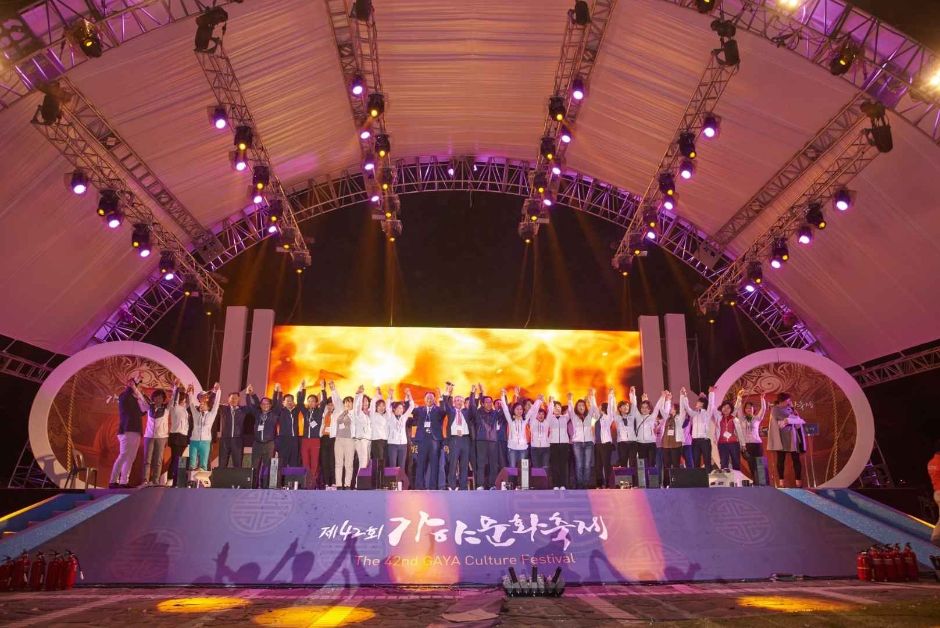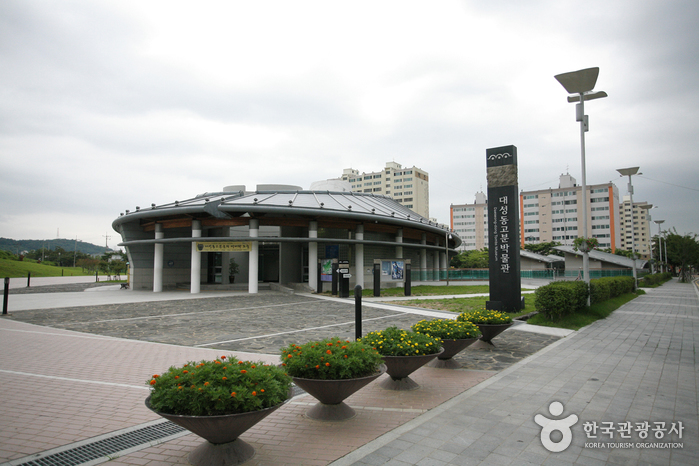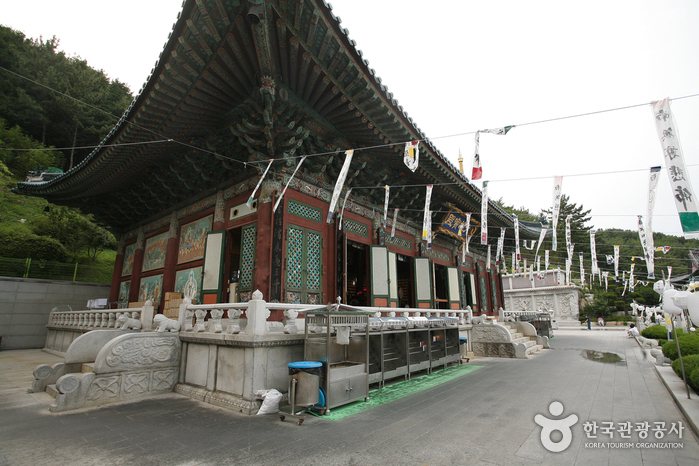Gimhae Nakdonggang River Rail Park (김해낙동강레일파크)
19.4Km 2022-12-29
41, Masa-ro 473beon-gil, Gimhae-si, Gyeongsangnam-do
Gimhae Nakdonggang River rail bike runs for about 3km in distance and you may enjoy nakdonggang river's beautiful view while riding on the rail bike. Experience a unique atmosphere as you bypass the vintage railway bridge, and a wine cave can also be found in the vicinity.
Gimhae Korean-style house [Korea Quality] / 김해한옥체험관 [한국관광 품질인증]
19.4Km 2023-10-25
40 , Wangneung-gil, Gimhae-si, Gyeongsangnam-do
+82-55-322-4735~6
The Hanok Experience Center in Gimhae, Gyeongsangnam-do, offers guests a taste of old-time hanok life. Rooms are furnished with traditional items, while the spacious wooden floor can be used as a meeting room. Rooms in the sarangchae are on the small side but have an upper floor with scenic views. The room in the annexe building has a traditional sleeping mat surrounded by a large folding screen, and feels like a scene from a historical drama. Each room has a modern bathroom, There is a traditional experience program, and information services in English and Japanese.
Yeon-San Dangdang Korean Medicine Hospital (연산당당한방병원)
19.4Km 2025-07-29
82 World cup-daero, Yeonje-gu, Busan
Yeonsan Dangdang Korean Medicine Hospital is a 98-bed hospital located in central Busan, near Yeonsan Station. The hospital offers traditional Korean medicine treatments, internal medicine, orthopedic care, and health screenings. It also has staff who speak English, Chinese, Japanese, and Vietnamese, ensuring that international patients can receive care in a comfortable and welcoming environment.
Sureungwon Garden (수릉원)
19.4Km 2024-01-23
35 Bunseong-ro 261beon-gil, Gimhae-si, Gyeongsangnam-do
Sureungwon Garden is a place themed around the meeting between King Suro, the founder of Gaya, and Queen Heo, who was the princess of Ayuta Kingdom, known as India. The name Sureungwon Garden also contains the meaning of an elegant forest where King Suro and Queen Heo walked together. An ecological park measuring 39,600 m2 has been created along a low ridge that connects the Tomb of King Suro, an important cultural heritage of the Gaya period; the Ancient Tombs in Daeseong-dong, the tombs of the Gaya kings; and the Bonghwang-dong Historic Site. It was created by representing the maritime kingdom of Gaya, imagining a pond of the garden where King Suro and Queen Heo used to walk, and planting prickly waterlilies and yellow floating hearts that are believed to have inhabited wetlands in the Gaya period. Trails along the cozy forest and pond make it easy to look around comfortably.
Gaya Culture Festival (가야문화축제)
19.4Km 2024-10-08
35 Bunseong-ro 261beon-gil, Gimhae-si, Gyeongsangnam-do
+82-55-330-6840
The Gaya Culture Festival celebrates the Gaya Kingdom, founded by King Kim Suro in AD 42, and its 500-year history. Gaya was quite advanced in the production of earthenware and iron implements, evidenced by the many artifacts found from that time. Through the Gaya Culture Festival, the region is continuing to preserve, build on, and develop the Gaya culture and heritage. The Gaya Culture Festival asserts Gaya’s rightful place alongside the Goguryeo, Baekje, and Silla kingdoms.
Museum of the ancient tombs in Daseong-dong (대성동고분박물관)
19.5Km 2023-01-02
126, Gayaui-gil, Gimhae-si, Gyeongsangnam-do
+82-55-350-0401
The Museum of the ancient tombs in Daseong-dong displays artifacts unearthed from the four excavations of the Daeseongdong Tumuli. Highlighting often overlooked relics of the Geumgwan Gaya, the museum has three ground-floor exhibit halls and several underground auxiliary facilities. The main exhibits include a life-sized statue of a mounted soldier and a warrior statue, both recreated based on bones excavated from the tumuli of Yean-ri. The museum relies heavily on videos and dioramas to help visitors explore all the museum has to offer.
Olive Young - Busan Ilgwang Branch [Tax Refund Shop] (올리브영 부산일광점)
19.6Km 2024-06-27
1F, 4, Haesong 1-ro, Ilgwang-eup, Gijang-gun, Busan
-
Samgwangsa Temple (삼광사)
19.6Km 2025-02-06
77 Choeupcheon-ro 43beon-gil, Busanjin-gu, Busan
+82-51-808-7111
Samgwangsa Temple is a Buddhist temple located on the slopes of Baegyangsan Mountain in downtown Busan. It houses various structures including the Daeungbojeon Hall, Bell Pavilion, and the Daebotap Tower, which stands at a x_height of 30 meters. The Daebotap Tower enshrines Buddha's relic brought from Tibet, Myanmar, and India. The temple offers different types of temple stays such as one-day, relaxation-oriented, and experiential stays. Visitors can participate in temple etiquette, tea ceremony experiences, 108 prostrations and meditation, Buddhist services, formal meal, and traditional cultural experiences tailored for foreigners.
Olive Young - Busan City Hall Station Branch [Tax Refund Shop] (올리브영 부산시청역점)
19.6Km 2024-06-27
105-B101, and B102, 30, Yeonje-ro, Yeonje-gu, Busan
-
Café Viaggio (카페비아조)
19.7Km 2024-02-26
164 Singman-ro, Gangseo-gu, Busan
Café Viaggio, situated beside the Nakdonggang River, offers scenic river views. The café's outdoor garden, adorned with statues and palm trees, creates an exotic ambiance. Their signature butterscotch latte, crafted with ground butter and scotch candies, is a highlight. Alongside their drinks, the café also features a diverse food menu, including croffles, pizza, and sandwiches.

![Gimhae Korean-style house [Korea Quality] / 김해한옥체험관 [한국관광 품질인증]](http://tong.visitkorea.or.kr/cms/resource/81/3016981_image2_1.jpg)



 English
English
 한국어
한국어 日本語
日本語 中文(简体)
中文(简体) Deutsch
Deutsch Français
Français Español
Español Русский
Русский